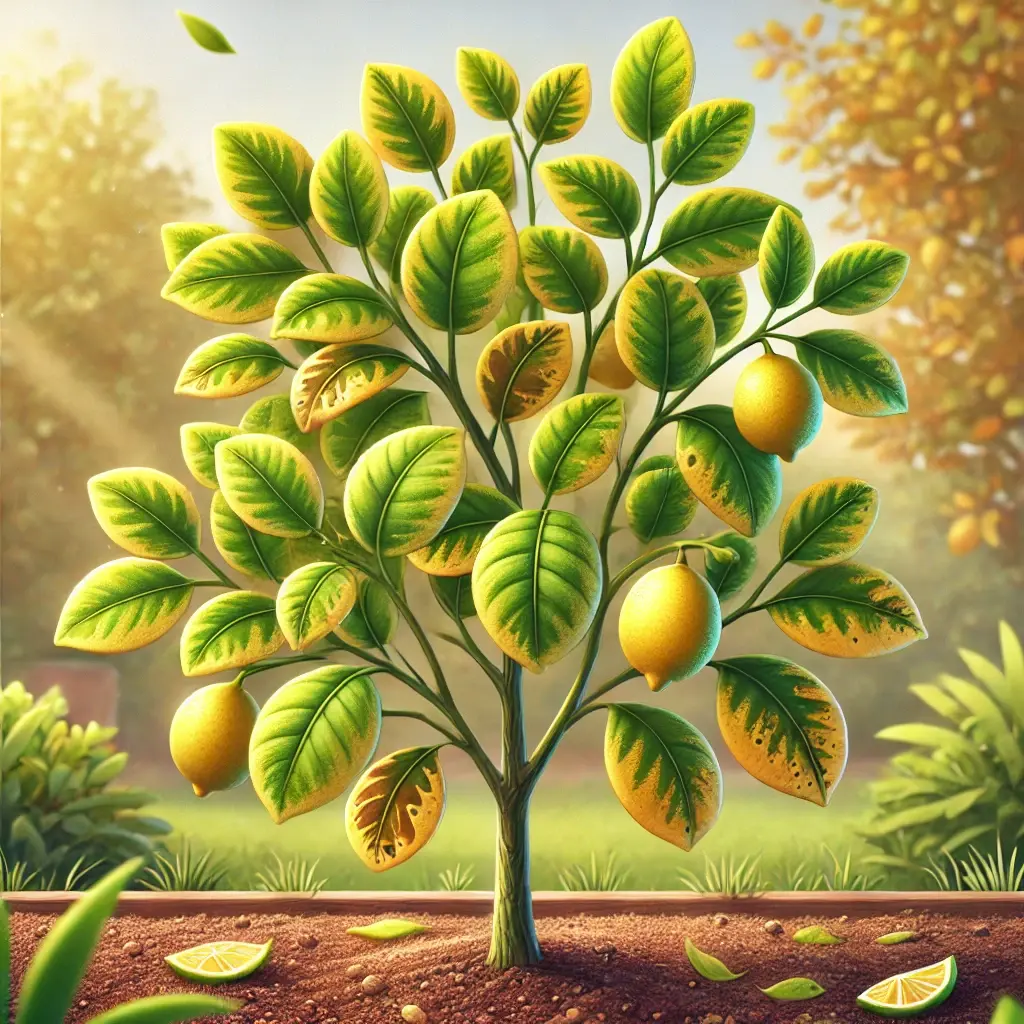Lemon trees are popular among Australian gardeners for their aromatic fruit, lush foliage, and ability to thrive in the country’s temperate climate. However, one common concern many owners face is why are my lemon tree leaves going yellow? Yellowing leaves often indicate that the tree is stressed or suffering from one or more issues. In this guide, we’ll explore the causes behind yellow lemon tree leaves and provide alternative treatments to address the problem.
Common causes of yellow leaves on lemon trees
Although lemon trees need little care, their leaves often display signs of suffering when their needs are not met. The most typically occurring causes are listed here:
1. Nutrient deficiencies
Lemon trees need a variety of minerals in order to be healthy. Usually beginning at the base of the tree, a shortage of one type or another could yellow the leaves.
Nitrogen deficiency: When a lemon tree lacks nitrogen, older leaves near the base will begin to yellow. Nitrogen is essential for leaf development, and a prolonged deficiency, known as chlorosis, can spread. Regular fertilization is crucial for lemon trees due to their high nutrient demands.
Magnesium deficiency: Another regularly occurring reason of yellowing leaves is a magnesium deficiency. Usually, this deficit shows up as yellow streaks separating the green leaf veins. Including magnesium supplements and Epsom salts into the soil will help to fix this.
Iron deficiency: Iron deficiency causes interveinal chlorosis, the condition whereby young leaves become yellow while their veins remain green. Usually, this comes from a pH of the soil that balances out the iron absorption for the tree.
Other deficiencies: Though this occurs less often than nitrogen or magnesium shortfalls, yellowing leaves can also result from zinc, manganese, or potassium limitations. Usually a well-balanced citrus-specific fertiliser helps to prevent these issues.
2. Improper watering
Water is the most important factor determining the state of your lemon tree. Finding a balance is really vital since overwatering and underwatering can fade leaves.
Overwatering: Lemon plants wish for well-draining soil and despise “wet feet”. Too much water Yellowing leaves resulting from underwatering obscure the roots and restrict nutrition absorption. Water deeply but infrequently, allowing the top two to three inches of soil to dry out between waterings.
Underwatering: Should the water level of your tree drop, its leaves could yellow and wither before dropping. Make sure your lemon tree gets enough water especially in hot weather.
3. Pests
Three faults here. Many of the insects that might create yellow leaves would target lemon trees. Aphids, spider mites, mealybugs weaken and discolour the leaves as they consume the sap of the tree.
Aphids: After eating the sap from lemon tree leaves, little insects known as aphids turn yellow. Both routine inspections and neem oil-based organic pesticide treatment can help.
Spider mites: Microscopic insects, spider mites can yellow leaves and cause them to drop under dry, heat conditions. Usually, spider mites span the leaves in a thin net.
Mealybugs: Living on the undersides of leaves, mealybugs are white, cotton-like clusters. Their diet heavy in sap results in discoloration and delayed development. Mealybug cure with insecticidal soap
4. Environmental stress
Lemon plants like specific environments. Stress induced by poor growing circumstances might lead to yellow leaves.
Sunlight: Every day a minimum eight hours of direct sunlight are needed by lemon trees. Should your tree be under a shadow, the absence of sunlight could cause yellowing of the leaves.
Temperature: Lemons break easily at both ends. Yellowing leaves could result from high temperatures causing heat stress. On the other hand, low temperatures could harm the tree and cause yellowing and leaf fall.
5. Poor soil drainage
To stop water from gathering around the roots, lemon plants must have well-drained soil. Watery soil causes root rot that can yellow leaves and eventually lead to their falling off. Consider adding organic components like compost to improve the soil should your tree grow in poor drainage or thick clay.
6. Disease
Though less frequently, fungal infections can destroy yellow lemon trees. Citrous canker and root rot may jeopardise the health of your lemon tree. Good pruning and surroundings free of clutter around the base of the tree help to prevent infections.
How to fix yellow leaves on lemon trees
Once you have identified what is yellowing your lemon tree, you should act. These are some simple common sense remedies.
1. Feed your lemon tree
If the yellow leaves of your lemon tree result from a nutritional deficit, apply a citrus-specific fertiliser. Get the necessary minerals from a well balanced fertiliser heavy in magnesium, iron, and nitrogen. Three times a year in late winter, spring, and summer your lemon tree should be fertilised.
2. Water your lemon tree correctly
Depending on the requirement of your lemon tree, change your watering frequency. To aid to control overwatering, let the ground dry between waterings. If the top two to three inches of soil are dry, water well; but, be sure the water can easily drain away.
3. Control pests
Watch your lemon tree closely for signs of bugs. Treat infections and stop more harm by using insecticidal soap or neem oil. For large infestations, organic pesticides could be worth using.
4. Ensure proper sunlight and drainage
If the sunshine isn’t enough for your lemon tree, move it. Make sure the tree gets daily at least eight hours of direct sunlight. Should the surrounding soil drain badly, consider adding organic matter or shifting the top soil to a better-drained spot.
5. Protect your tree from extreme weather
Covering your lemon tree helps to prevent heat stress in a warmer climate. Consider bringing potted trees indoors or under a frost blanket in the winter.
Preventing yellow leaves in the future
Still, prevention beats treatment in most cases. These simple rules will keep your lemon tree in good condition and stop more leaf yellowing:
- Fertilise regularly: Use a high-quality citrus-specific fertiliser to provide your tree with the necessary nutrients, including nitrogen, magnesium, and iron.
Maintain a consistent watering schedule: Ensure the soil remains moist but not waterlogged. Water deeply but infrequently, and always check the soil’s moisture level before watering. - Monitor for pests: Regularly check your lemon tree for pests, and treat infestations promptly to prevent long-term damage.
- Ensure proper sunlight: Keep your lemon tree in a location where it receives full sunlight for at least 8 hours a day.
- Prune regularly: Trim dead or diseased branches to encourage air circulation and healthy growth.
Conclusion
Among other things, nutritional deficits, improper irrigation, pests, and environmental stress can cause yellow leaves on lemon trees. Should you identify and resolve the problem, your lemon tree will remain healthy; future problems will also be avoided. Maintaining your lemon tree rich and healthy all year largely depends on frequent fertilisation, suitable watering, pest control, and enough sunlight.
If you take good care and attention to your lemon tree, it can produce years of lemons and beautiful green leaves.






